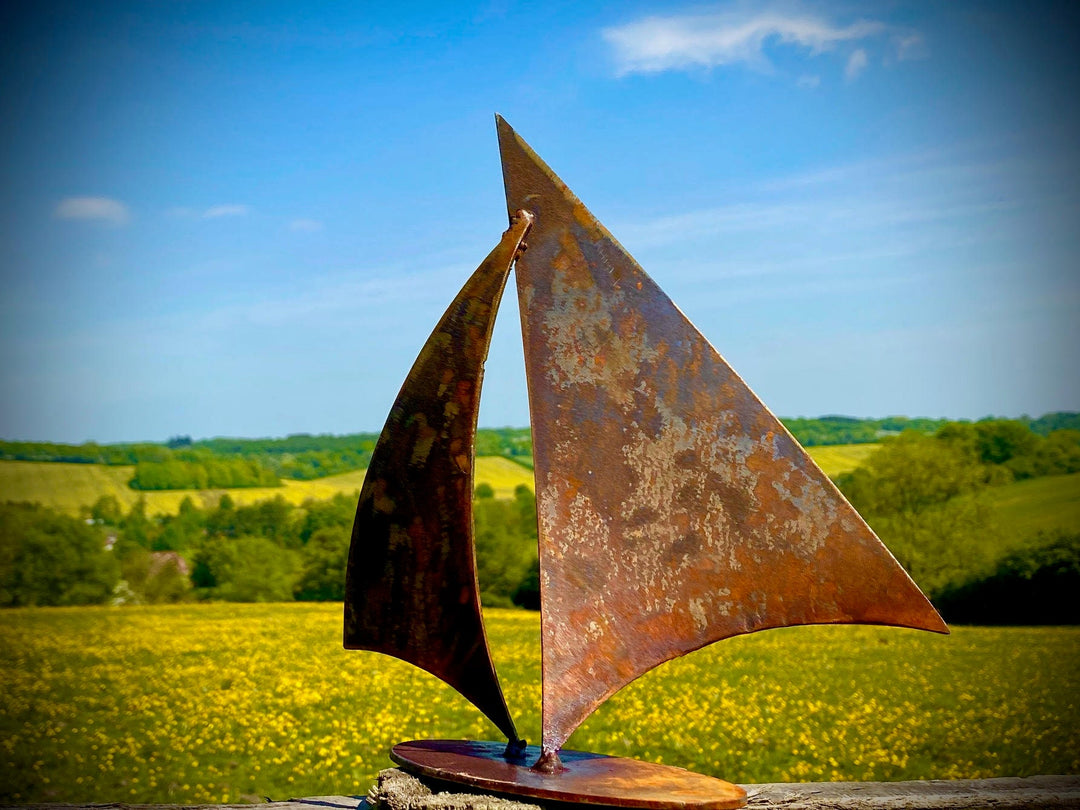In the world of garden decor, mixing wood and metal in art is a trend that continues to captivate both artists and garden enthusiasts alike. By blending natural and industrial elements, you can create stunning pieces that add character and charm to any outdoor space. This fusion not only enhances the aesthetic appeal of gardens but also provides durability and versatility in design.

Why Combine Wood and Metal?
Wood and metal are two materials that, when combined, offer a unique balance of warmth and strength. Wood brings a natural, earthy feel to garden art, while metal introduces a modern, sleek touch. Together, they create a harmonious blend that complements both traditional and contemporary garden styles.
Types of Wood Used in Garden Art
When considering wood for garden art, it’s essential to choose types that can withstand outdoor conditions. Popular choices include cedar, teak, and redwood, known for their durability and resistance to rot and insects.
Cedar
Cedar is a popular choice due to its natural resistance to decay and its rich, warm color that ages beautifully over time.
Teak
Teak is known for its exceptional durability and water resistance, making it ideal for outdoor projects.
Redwood
Redwood is valued for its stability and resistance to warping, providing a long-lasting option for garden art.
Types of Metal Used in Garden Art
Choosing the right metal is crucial for ensuring longevity and aesthetic appeal. Common metals include wrought iron, stainless steel, and copper.
Wrought Iron
Wrought iron is favored for its classic look and sturdiness, making it a timeless choice for garden sculptures and structures.
Stainless Steel
Stainless steel’s sleek appearance and corrosion resistance make it perfect for modern garden art pieces.
Copper
Copper adds a warm, inviting glow to garden art and develops a beautiful patina over time.
Designing with Wood and Metal
When designing garden art, consider the balance between wood and metal. Use wood for larger, structural elements, and metal for intricate details or focal points. This combination can be seen in abstract metal garden art that incorporates wooden accents.
Inspiration for Garden Art
Glean inspiration from nature, architecture, or personal interests. For instance, you might create a sculpture that mimics the form of a tree or a modern piece inspired by industrial design.
Maintaining Wood and Metal Art
Proper maintenance is key to preserving the beauty of your garden art. Regularly apply sealants to wood to protect against the elements and clean metal surfaces to prevent rust and corrosion.
Wood Maintenance
Use a quality wood sealant to maintain the color and integrity of your wooden elements.
Metal Maintenance
Clean metal parts with a mild detergent and water to keep them looking their best.
Where to Place Garden Art
The placement of garden art is crucial for maximizing its impact. Consider areas where the art will be most visible, such as near pathways or as a focal point in a garden bed.
Creating Your Own Garden Art
For those inclined to DIY, creating your own wood and metal garden art can be a fulfilling project. Start with simple designs and gradually incorporate more complex elements as you gain confidence.
Beginner Projects
Start with simple projects like a wooden bench with metal legs or a small sculpture using scrap materials.
Advanced Projects
For more experienced crafters, consider building larger installations or intricate sculptures that require welding and carpentry skills.
DIY Resources
There are many online resources and tutorials available for those interested in creating their own garden art. Websites like Michelle J Designs offer practical advice and inspiration for DIY metal garden art projects.
Environmental Considerations
When selecting materials, consider the environmental impact. Opt for sustainably sourced wood and recycled metal to minimize your ecological footprint.
Conclusion
Mixing wood and metal in garden art offers endless possibilities for creativity and expression. By carefully selecting materials and designs, you can create beautiful, lasting pieces that enhance your garden’s aesthetic and reflect your personal style.

FAQs
What types of wood are best for outdoor art?
Cedar, teak, and redwood are excellent choices due to their durability and resistance to the elements.
How do I maintain metal garden art?
Regular cleaning and applying protective coatings can help prevent rust and maintain the metal’s appearance.
Can I create garden art as a beginner?
Absolutely! Start with simple projects and gradually tackle more complex designs as you gain experience.
This article contains affiliate links. We may earn a commission at no extra cost to you.

